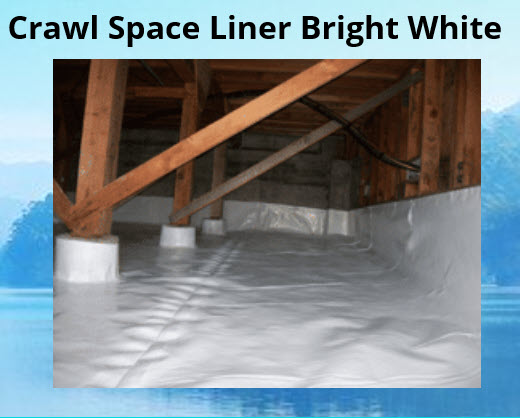What is a Crawl Space Liner and Why Do Some Homes Need One?

A crawl space liner is a protective barrier installed in the crawl space beneath a home. It typically consists of a durable material such as polyethylene or reinforced plastic and is placed on the ground and sometimes up the walls of the crawl space.
People install crawl space liners for several reasons:
-
Moisture Control: One of the primary reasons for installing a crawl space liner is to control moisture levels. By preventing moisture from seeping into the crawl space, liners help to mitigate issues such as mold growth, wood rot, and structural damage.
-
Improved Air Quality: Crawl space liners can also help improve indoor air quality by reducing the risk of mold and mildew growth, which can release harmful spores into the air.
-
Energy Efficiency: By creating a barrier between the crawl space and the rest of the home, liners can help improve energy efficiency by reducing drafts and preventing cold air from entering the living space.
-
Pest Prevention: Crawl space liners can also act as a barrier against pests such as insects and rodents, helping to keep them out of the home.
Crawl space liners are more prevalent in certain parts of the USA for several reasons:
-
Climate: Crawl space liners are more common in areas with high humidity levels or prone to moisture-related issues such as the southeastern United States. The hot and humid climate in these regions can lead to elevated moisture levels in crawl spaces, making liners necessary for moisture control.
-
Building Codes: Building codes and regulations may also influence the prevalence of crawl space liners in certain regions. Areas with stricter building codes or regulations related to moisture control may have a higher prevalence of crawl space liners.
-
Construction Practices: Regional construction practices and building traditions can also play a role in the prevalence of crawl space liners. In some areas, crawl spaces are a common feature of homes, and liners are routinely installed as part of the construction process to address moisture issues.
Care and Maintenance of a Crawl Space Liner
Your crawl space liner plays a crucial role in maintaining a dry, healthy environment beneath your home. Regular care and maintenance are essential to ensure its effectiveness in preventing moisture-related issues and preserving the structural integrity of your property. In this comprehensive guide, we'll explore essential maintenance tasks, signs of potential problems, and practical solutions for maintaining your crawl space liner.
- Routine Inspection:
- Conduct visual inspections of your crawl space liner at least twice a year, ideally in spring and fall.
- Check for signs of damage, such as tears, punctures, or wrinkles, which can compromise its integrity and effectiveness.
- Look for any signs of moisture accumulation or mold growth, indicating potential leaks or ventilation issues.
- Signs of a Failing Crawl Space Liner:
- Increased moisture levels or standing water in the crawl space.
- Musty odors or mold growth on the liner or surrounding surfaces.
- Sagging or wrinkling of the liner, indicating poor installation or structural issues.
- Higher energy bills due to decreased insulation efficiency caused by a damaged liner.
- Addressing Tears or Damage:
- If you notice a tear or puncture in the crawl space liner, it's essential to address it promptly to prevent moisture infiltration.
- Clean the area surrounding the tear to remove any dirt or debris.
- Use a waterproof tape or patch specifically designed for crawl space liners to seal the tear effectively.
- Ensure the patch is securely adhered to the liner and covers the entire damaged area to prevent further moisture penetration.
- Prevention and Maintenance Tips:
- Maintain proper ventilation in the crawl space to prevent moisture buildup and condensation.
- Keep the crawl space clean and free of debris to avoid punctures or damage to the liner.
- Monitor the condition of the liner regularly and address any issues promptly to prevent extensive damage.
- Consider professional inspection and maintenance services annually to ensure the integrity and effectiveness of your crawl space liner.
Conclusion: Caring for your crawl space liner is essential for maintaining a dry, healthy environment beneath your home and preventing moisture-related issues. By performing routine inspections, addressing signs of damage promptly, and following proper maintenance practices, you can extend the lifespan of your crawl space liner and protect your property from costly repairs. Remember to consult with a professional if you encounter significant damage or issues beyond your expertise to ensure proper resolution and long-term protection.


